Danish Food Dishes: Basic Overview
Common Ingredients
Common Cooking Methods
Courses
Meals
Key Taste
Eating Etiquette
Meal Presentation
Culinary Festivals
Influence and Fusion
Popular Types of Danish Dishes
-
Sandwiches
Danish people enjoy many types of hearty and convenient sandwiches.
These sandwiches are typically made with rye bread and savory ingredients like meat and dairy products.
These dishes are nursing enough to be a full meal on their own.
-
Fried Dishes
Danish cuisine offers a large number of fried dishes for the main course, which usually have pork as the main ingredient.
These dishes are very rich and suitable for large, hearty meals.
Danish fried dishes are best enjoyed hot with mashed potatoes or similar starchy sides.
Danish dishes are specialties associated with Denmark, a country in Northern Europe. These dishes are usually nutrient-rich and closely tied with specialties in neighboring countries, such as Norwegian delicacies and Swedish delicacies.
Due to Denmark’s long coastline and cold climate, seafood, root vegetables, grains, and preserved food are very popular. Open-faced sandwiches and pastries are the core ingredients of local cuisine.
I will cover the common features of traditional Danish food before moving on to the global popularity and healthy aspects of such dishes.
Next, I will describe the 16 most excellent Denmark has to offer. You will also learn about the core features of local cuisine and beverage suggestions for pairing with food.
16 Most Popular Danish Dishes with Filters
Keep on reading, and you will discover the 16 best dishes in Denmark. Advanced filters like alphabetical sorting, main ingredients, taste, cooking methods, dish types, courses, and global popularity will help you navigate this content more easily.
In addition, there are filters based on specific culinary styles, such as traditional, national, and street food options. Use them to improve your reading experience.
Smørrebrød
- National
- Street Food
- Traditional
Smørrebrød, literally “butter and bread,” is a classic open-faced sandwich for lunch in Denmark. It consists of buttered rye bread (rugbrød) and toppings, like cold cuts, spreads, cheese, pickled herrings, cucumbers, tomatoes, and fresh herbs.
Depending on the ingredients, there are many popular variations of smørrebrød. The most famous one is dyrlægens natmad (“Veterinarian’s midnight snack”), which is made with dark rye bread, salt beef, meat aspic, liver pâté, garden cress, and raw onion rings.
Another well-known variation is stjerneskud (literally “shooting star”), which was created in the 1960s to welcome the famous astronaut Yuri Gagarin who was visiting Copenhagen. It consists of buttered bread slices and various types of seafood.
Frikadeller
- Street Food
- Traditional
Frikadeller is the Danish version of pan-fried meatballs. It is typically made using minced veal (with beef and pork as possible alternatives), eggs, chopped onions, bread crumbs, and milk.
Frikadeller is golden and crispy on the outside, yet tender and juicy inside. These delicious meatballs can be served hot or cold with boiled potatoes, gravy, pickled vegetables, or red cabbage.
Speaking of meatballs, another Danish dish worth trying is boller i karry, which is prepared by coating pork meatballs in a creamy curry sauce on a bed of steamed rice.
Stegt Flæsk
- National
- Traditional
Stegt flæsk is a classic Danish dish prepared with fried pig belly, potatoes, and persillesovs (parsley sauce). Its typical accompaniments include mashed potatoes, cornbread, apple compote, and cheese.
Since the 2000s, eating stegt flæsk on election nights has become a tradition in Denmark. This is because its name sounds like valgflæsk (“election pork”), a term for politicians’ unrealistic promises throughout their campaigns.
Æbleskiver
- Street Food
- Traditional
Æbleskiver, literally “apple slice,” is a Danish pancake-like treat that comes in a spherical shape. It is made from a batter similar to that used for pancakes, consisting of flour, eggs, sugar, milk, and baking powder or yeast.
In Denmark, æbleskiver is a casual snack for family gatherings, with jam, powdered sugar, maple syrup, butter, and whipped cream being well-liked toppings. This spherical pancake is sometimes sold by street sellers in the winter.
Legend has it that æbleskiver was invented by a band of Vikings who made pancakes with their helmets or shields due to the lack of regular pans.
Flæskesteg
- Traditional
Flæskesteg, or roast pork, is an important dish in Denmark. It is a traditional part of the Danish Christmas supper, which is served on Christmas Eve.
Many Danish people love flæskesteg because of its crispy, crackling skin and the savory, succulent meat beneath. They typically pair roast pork with boiled potatoes, brown sauce (made from the meat juices), red cabbage, and pickled cucumbers for a rounded meal.
While pork has long been a popular food in Denmark, it wasn’t until the Industrial Revolution in the 1860s, when wood-fired ovens were introduced for domestic use, that roast pork and other pork-based dishes became widely accessible.
Rundstykker
- Traditional
Rundstykker, literally “round bits/ pieces”, is a Danish round breakfast bun. It comes in numerous varieties: some are soft, some are crusty, and some are covered in poppy or sesame seeds.
Rundstykker is available at every bakery in Denmark, and locals often grab a few when they want a quick breakfast on the go. In addition, this buttery bread roll is also a versatile side dish, snack, and appetizer.
Tarteletter
- Traditional
Tarteletter is a traditional Danish dish prepared by filling a small, open-faced pastry shell with a savory and creamy mixture. Chicken and asparagus are the most popular ingredients for the filling, though other types of meat and vegetables are used in other variations.
Tarteletter is usually part of a buffet served at restaurants or during parties. Because of its modest size and lightness, this pastry dish is enjoyed as a starter, though some people also consume it as an entree or breakfast dish.
Æggekage
- Traditional
Æggekage is a hearty Danish omelet or frittata. Beaten eggs, flour, milk, and seasonings are its core ingredients, while diced bacon, chives, onions, and tomatoes are ideal additions.
Overall, æggekage is a simple yet excellent breakfast or supper dish. Serve it the Danish way with boiled potatoes and rye bread.
Grød
- Traditional
Grød refers to porridge made by simmering grains in milk or water. It is a widely enjoyed breakfast dish in Danish cuisine.
Grød’s main ingredients range from traditional choices like oats, rye, and barley to more modern interpretations using quinoa or chia seeds. Danish people often add sugar, butter, and dried fruits to their grød, as well as serve the porridge alongside syrups, honey, and nuts.
Pålægschokolade
- Traditional
Pålægschokolade is the Danish food product of thin, tempered chocolate slices designed specifically to be used as a topping on bread. It was first introduced to the Danish market in 1963 by Galle & Jessen, a famous chocolate and confectionery brand.
Pålægschokolade has a smooth texture and melts easily upon contact with warm bread, providing a sweet and indulgent contrast to plain or savory bread.
Danish chocolate slices are especially popular among children and are a common sight in Danish lunch boxes.
Spandauer
- Traditional
Spandauer, often known as the Danish or Danishes in English, is a beloved Danish pastry that originated in the Austrian baking tradition. It combines a flaky, buttery laminated crust with sweet fillings and toppings.
Traditional spandauer fillings include apples, raspberries, vanilla custard, and almond paste, while toppings are usually icing or almonds. Spandauer is easy to find in every Danish bakery and is suitable for all occasions, especially a Sunday breakfast.
Øllebrød
- Traditional
Øllebrød, literally “beer bread,” is an interesting Danish porridge made by soaking rye bread in beer (often a dark porter) and cooking it. Sugar or cream is sometimes added to sweeten the taste.
A well-known breakfast dish, øllebrød has a sour, rich, and caramel-like flavor thanks to the combination of unlikely ingredients.
Legend has it that øllebrød originated in monasteries, as monks dipped leftover or stale bread in hot beer and consumed it to avoid food waste. Nowadays, øllebrød is considered a healthy and easily digestible dish, so it is a common sight at hospitals or retirement homes.
Æbleflæsk
- Traditional
Æbleflæsk is a classic Danish dish made by frying thinly sliced tart apples and bacon or pork belly with onions and seasoning. It combines the sweet, tart, and savory elements of apples and pork into a strange yet refreshing flavor profile.
Æbleflæsk was created in Funen, a Danish island between Jutland and Zealand, in the 16th century. Since then, it has been a popular dish around Christmas or Easter, commonly served on top of rye bread.
Pariserbøf
- Traditional
Pariserbøf, literally “Parisian steak,” is a beloved Danish open-faced sandwich created in the 1960s. Its star is minced beef that has been seasoned and pan-fried in butter until medium rare or well done.
Pariserbøf also features pickled beets, capers, red onions, and a raw egg yolk atop butter-fried French toast. Despite its fancy name, this Parisian steak sandwich has no connection with Paris or even France, except for the use of French-style white bread.
Brændende Kærlighed
- Traditional
Brændende kærlighed, which translates to “burning love,” is a typical Danish dish made of mashed potatoes, bacon, and fried onions. It is often topped with grated nutmeg, leek, and parley and served with a side of syltede rødbeder (sweet pickled beets).
Brændende kærlighed originated in rural Danish cuisine as a hearty meal to warm up during the cold months. Today, this mixture of crispy bacon and creamy mashed potatoes is still a staple in fall and winter.
Bøfsandwich
- Traditional
Bøfsandwich is a fascinating Danish sandwich consisting of a thick beef patty served on a bun or a bread roll. While this concept sounds like an American hamburger, what makes it different is that the Danish sandwich is coated in a lot of brown gravy.
Bøfsandwich first appeared in 1949 and has since been an essential element of Danish fast food culture. This unique take on hamburgers is available at various burger joints, casual restaurants, and roadside stalls throughout the country.
Now that you have learned about the most popular Danish dishes, let’s check out some general aspects of local cuisine to deepen your understanding.
What Is Danish Cuisine Like?
Check out the following facts, and you will know Danish cuisine like the back of your hand.
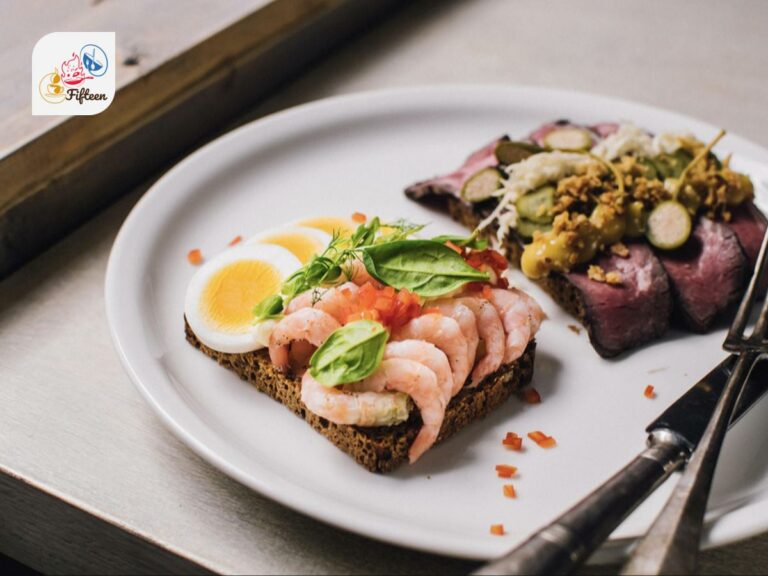
Danish cuisine shares many characteristics with its Nordic neighbors, namely Sweden, Norway, Iceland, and Finland. Due to historical ties and geographical proximity, German cuisine also plays a role in shaping Danish food.
In addition, French cooking techniques and dishes were the inspiration for many Danish specialties created in the 19th and 20th centuries. Many famous Danish pastries were invented during this period.
Modern-day New Nordic cuisine movement, which interprets traditional dishes in creative and sustainable ways, has also gained traction throughout Denmark, especially in Copenhagen.
Since Denmark has an extensive coastline, seafood is an important staple of the local diet. The country’s climate, featuring cold winters and mild summers, results in a reliance on hearty grains (like rye and barley) and root vegetables (such as potatoes and beets).
Rye bread is a cornerstone of Danish cuisine. In addition, the ease of raising pigs in the Danish climate and terrain has led pork to become a major protein source from times out of mind.
In addition, the tradition of preserving foods for winter makes smoking, pickling, and salting very popular methods.
While not a food item, the concept of hygge is deeply intertwined with Danish food culture. This term refers to a sense of coziness, comfort, and contentment, which can be achieved through enjoying good food and drink in the company of loved ones.
The Danish emphasis on simple, hearty meals shared with family and friends is a key part of this cultural phenomenon.
What Beverages to Pair With Danish Dishes?
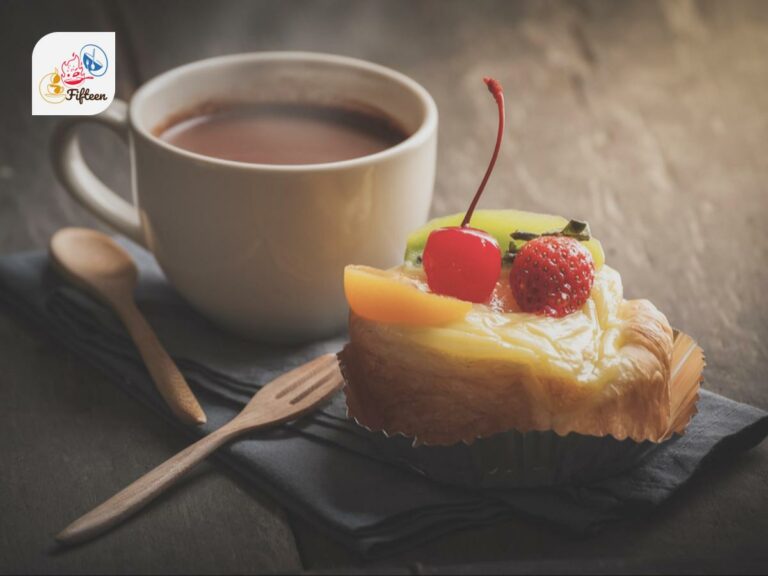
Generally, the five following types of beverages are the best options for complementing dishes in Denmark.
Beer
Beer goes well with many various meat-based dishes, such as smørrebrød, frikadeller, and flæskesteg.
Spirits
Danish spirits, like aquavit and vodka, can cut through the richness and savoriness of meaty dishes, including pariserbøf and brændende kærlighed.
Mead
In Denmark, locals serve mead with many kinds of dishes, especially pastries and pancakes like æbleskiver and spandauer.
Coffee
Bitter coffee is a perfect match for sweet dishes and pastries, including rundstykker, spandauer, and æggekage.
Chocolate-based Beverages
Both hot chocolate and cold chocolate are well-known in Denmark. These beverages pair beautifully with æbleskiver and pålægschokolade.
Tell me about your favorite Danish dishes in the comment section. I’d love to hear your feedback! Before you leave, don’t forget to share this list of Danish dishes with your friends.



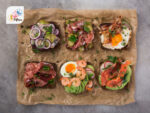
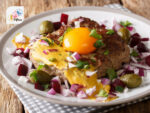
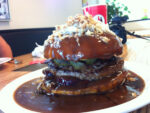

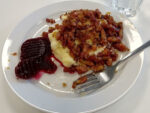
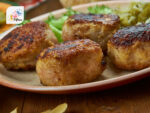
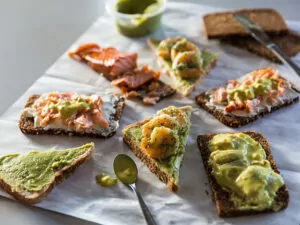
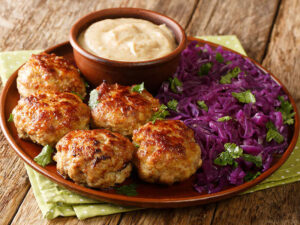
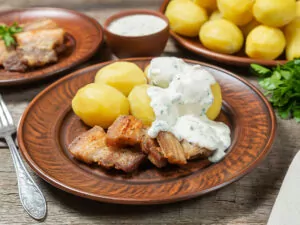
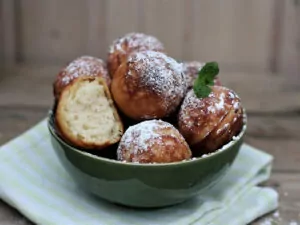
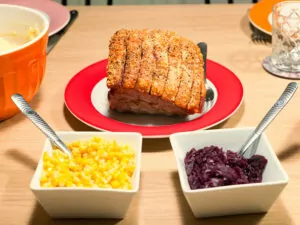
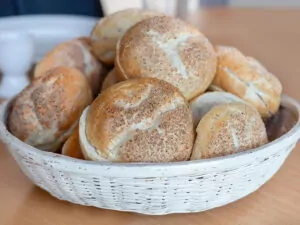



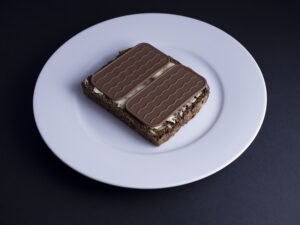


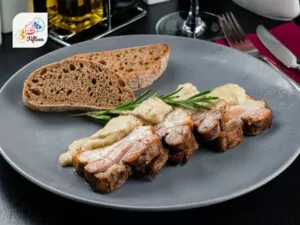
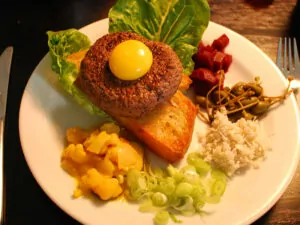
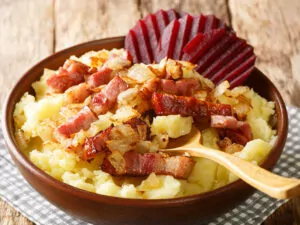
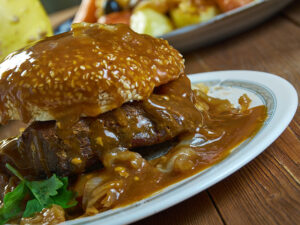
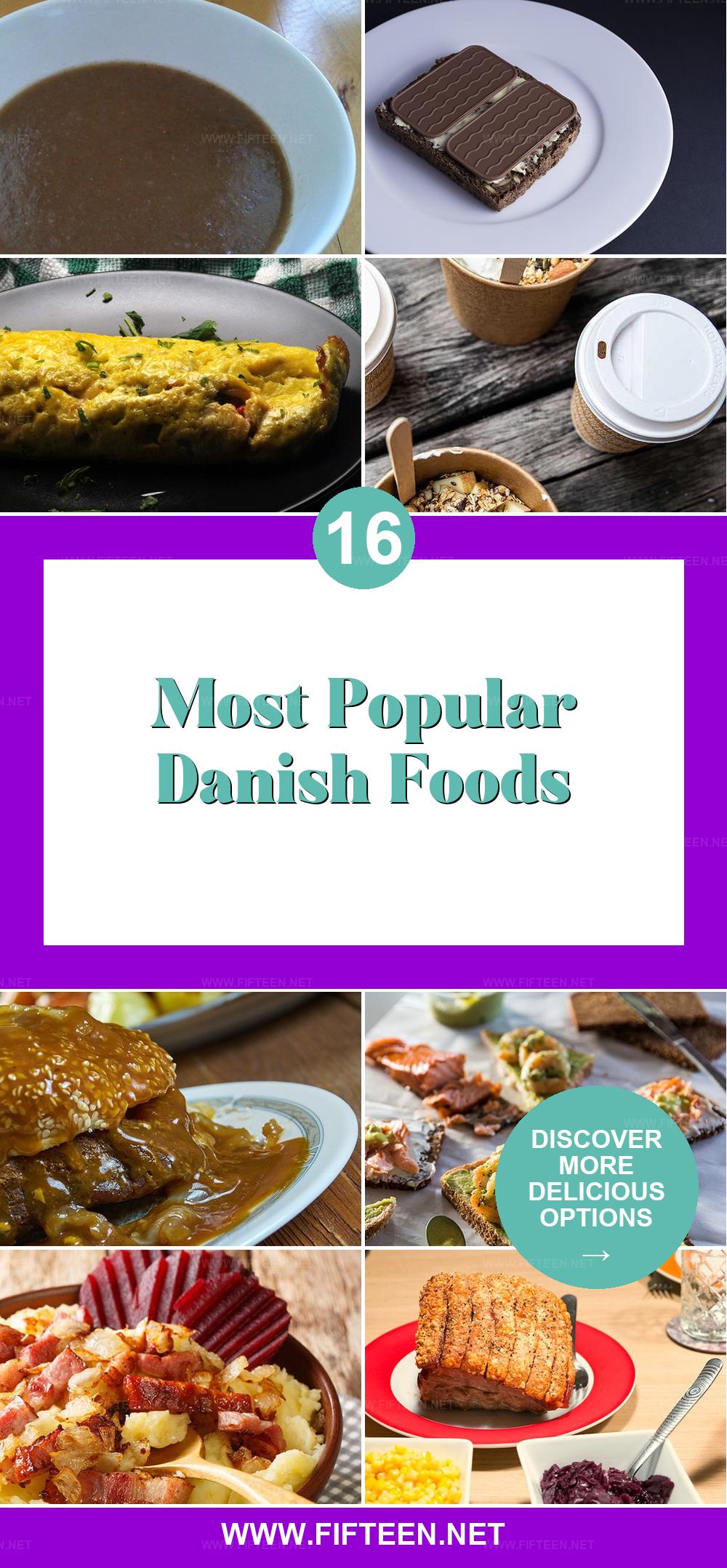
Jamie Scott
Editor in Chief, Senior Content Writer
Expertise
Home Cooking, Meal Planning, Recipe Development, Baking and Pastry, Food Editor, Cooking-video Maker, Western Food Evaluation Expert
Education
Le Cordon Bleu College of Culinary Arts
Local Community College, New York, NY
Jamie Scott is a skilled culinary expert and content creator specializing in Western cuisine. With over 15 years in the culinary field and formal training from Le Cordon Bleu, Paris, Jamie deeply understands how to blend nutrition with delicious flavors. His passion for cooking matches his commitment to making healthy eating accessible and enjoyable.
On Fifteen.net, Jamie brings a fresh perspective to classic dishes and beverages, offering readers insightful recipes, cooking tips, and a fresh view on meal planning that emphasizes taste, health, and simplicity.